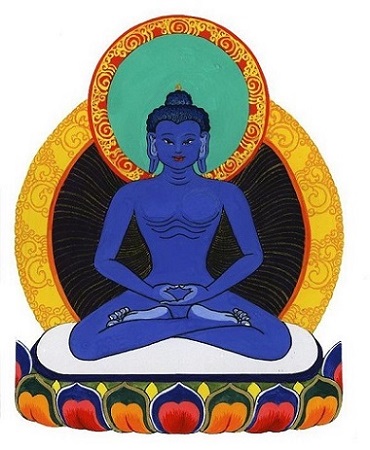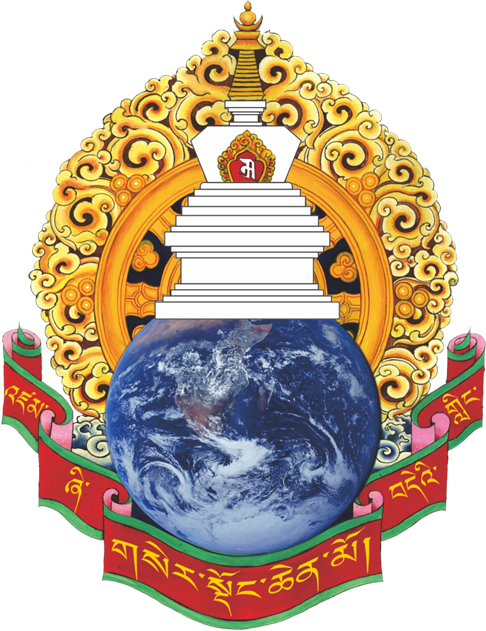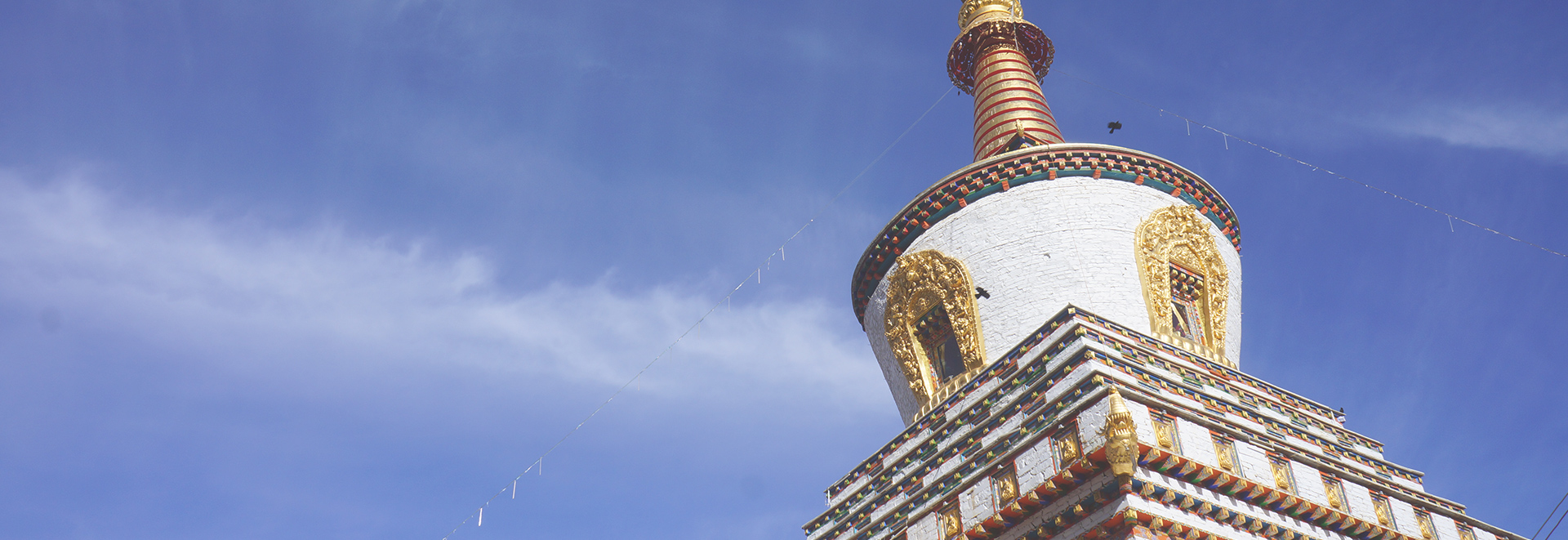Longchen Nyingtig Lineage
LINEAGE

The Dharmakāya, the ultimate body, constitutes the basis of all the qualities of the Buddha, and of their capacity to function. The nature of the Dharmakāya is pure from its primordial state and pure from any adventitious defilements. Transcending thought and verbal expression, it dwells in freedom from characteristics, like space. Never moving from the state of Dharmakāya, it fulfills the needs of all living beings through the spontaneous presence of two form bodies.
In Nyingma icons, Dharmakāya is symbolized by a naked, skycolored (light blue) male and female Buddha in union, called Samantabhadra.
Samantabhadra signifies the aspect of realizing the Dharmakāya, the ultimate nature of all the good and bad qualities of saṃsāra and nirvāṇa. He realizes the primordial wisdom of the ultimate sphere, free from conceptualization, from the beginning. Because of this realization he remains neither in the extremes of saṃsāra nor in the peace ofnirvāṇa. He is empowered with the knowledge of the ultimate truth, and this knowledge is the all-equalizing primordial wisdom. It is not a mere emptiness brought about by cessation. Instead, the object of the discriminating primordial wisdom of all the Buddhas, which is the essence of subtle primordial wisdom, dwells as the pure land of inner clarity, the “body of the youth within a vase.” The inner clarity of the relationship between primordial wisdom and its object may be likened to the way a crystal projects a spectrum of colors, yet the rays are actually inherent in the crystal itself. Because of that sacred power, the inner clarity, the five teachers of the five classes of the Sambhogakāya maṇḍala dwell, through manifestative inherence, in the
great display of indivisible forms and wisdom.
The Dharmakāya dwells without change, discrimination, distinction, in a fivefold manner:
PLACE: The ultimate sphere, the pure land of the “body of theyouth within a vase”
TEACHER: Samantabhadra, great self-awareness, the primordial wisdom of evenness-suchness
DISCIPLES: The oceanlike assembly of primordial wisdoms
TIME: Changeless time, suchness
TEACHING: The absolute Dzogpa Chenpo, the doctrine of the uncreated body, speech, and mind
Dharmakāya, pure from the beginning, has one taste, like space. It dwells with threefold primordial wisdom, transcending the conceptualization of the extremes, substantialism, and nihilism. The three primordial wisdoms are as follows:
1. The primordial wisdom of the intrinsic essence, pure from the beginning, transcending the extremes of conceptualization and verbal expression, like a transparent crystal.
2. The primordial wisdom of the spontaneously accomplished nature; it is a subtle, deep clarity, which serves as the ground forthe arising of the attributes of the manifestative aspect, and it does not exist as a mode of phenomenal particularity.
3. The primordial wisdom of all-pervading compassion (power); it dwells just as the nonobstructiveness of the ground for the arising which occurs through the manifestative power of the intrinsic essence; but this awareness does not analyze its object.
If there were any grossness, then the Dharmakāya would be phenomenal and it would have characteristics, in which case it would not be qualifiable as that which has peace and freedom from conceptualization as its very significance. If there were not the subtle aspect of deep clarity as the ground of arising, then the Dharmakāya would be a mere absence, like a blank. So it is a primordial wisdom of subtle, open clarity, which dwells as the ground of arising, transcending the two extremes of substantialism and nihilism.
The Dharmakāya possesses three great qualities:
1. Great purity (sPang Pa Ch’en Po): The two sudden and illusory obscurations with their habituations, which do not exist in actuality, are fully purified.
2. Great realization (rTogs Pa Ch’en Po): By the great primordial wisdom of the nonduality, the Dharmakāya sees all saṃsāra and nirvāṇa without falling into partiality.
3. Great mind (Sems Ch’en Po): Because of those two previous qualities, the manifestations of the Dharmakāya for the benefit of all beings are spontaneously and naturally accomplished without any conception.
*Above contents from Masters of Meditation and Miracles: Lives of the Great Buddhist Masters of India and Tibet by Tulku Thondup (1999).


